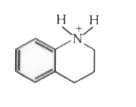Which of the following is strongest Lewis base?
CH−3
F−
NH−2
OH−
The correct Answer is:A
To determine which of the following is the strongest Lewis base among the options CH3⁻, F⁻, NH2⁻, and OH⁻, we can follow these steps:
Step 1: Understand Lewis Bases
Lewis bases are defined as substances that can donate a pair of electrons. The strength of a Lewis base is influenced by its ability to donate these electrons, which is affected by the electronegativity of the atom involved.
Step 2: Analyze the Given Species
We have four species to analyze:
1. CH3⁻ (methyl anion)
2. F⁻ (fluoride ion)
3. NH2⁻ (amide ion)
4. OH⁻ (hydroxide ion)
Step 3: Consider Electronegativity
Electronegativity is the tendency of an atom to attract electrons. The lower the electronegativity of the atom, the more readily it can donate its electrons, making it a stronger Lewis base. The electronegativity values for the relevant atoms are as follows:
- Carbon (C) < Nitrogen (N) < Oxygen (O) < Fluorine (F)
Step 4: Determine the Order of Electronegativity
From the electronegativity values, we can establish the following order:
- F⁻ (most electronegative)
- OH⁻ (less electronegative than F)
- NH2⁻ (less electronegative than OH)
- CH3⁻ (least electronegative)
Step 5: Relate Electronegativity to Lewis Base Strength
Since Lewis base strength is inversely proportional to electronegativity, we can deduce the following order of Lewis base strength:
- CH3⁻ > NH2⁻ > OH⁻ > F⁻
Step 6: Identify the Strongest Lewis Base
From our analysis, CH3⁻ has the lowest electronegativity and therefore is the strongest Lewis base among the given options.
Conclusion
The strongest Lewis base among the options is CH3⁻.
---
Lewis bases are defined as substances that can donate a pair of electrons. The strength of a Lewis base is influenced by its ability to donate these electrons, which is affected by the electronegativity of the atom involved.
We have four species to analyze:
1. CH3⁻ (methyl anion)
2. F⁻ (fluoride ion)
3. NH2⁻ (amide ion)
4. OH⁻ (hydroxide ion)
Electronegativity is the tendency of an atom to attract electrons. The lower the electronegativity of the atom, the more readily it can donate its electrons, making it a stronger Lewis base. The electronegativity values for the relevant atoms are as follows:
- Carbon (C) < Nitrogen (N) < Oxygen (O) < Fluorine (F)
From the electronegativity values, we can establish the following order:
- F⁻ (most electronegative)
- OH⁻ (less electronegative than F)
- NH2⁻ (less electronegative than OH)
- CH3⁻ (least electronegative)
Since Lewis base strength is inversely proportional to electronegativity, we can deduce the following order of Lewis base strength:
- CH3⁻ > NH2⁻ > OH⁻ > F⁻
From our analysis, CH3⁻ has the lowest electronegativity and therefore is the strongest Lewis base among the given options.
The strongest Lewis base among the options is CH3⁻.
Similar Questions
Knowledge Check
Which of the following is strongest acid ?
AH−H∣N+∣H−HB C
C D
D
Which of the following is the strongest base ?
View SolutionWhich of the following is the strongest base ?
View SolutionWhich of the following is the strongest base ?
View SolutionWhich of the following is the strongest base?
View SolutionWhich of the following is the strongest base?
View SolutionWhich of the following is the strongest base:
View SolutionWhich of the following is the strongest base ?
View Solution
